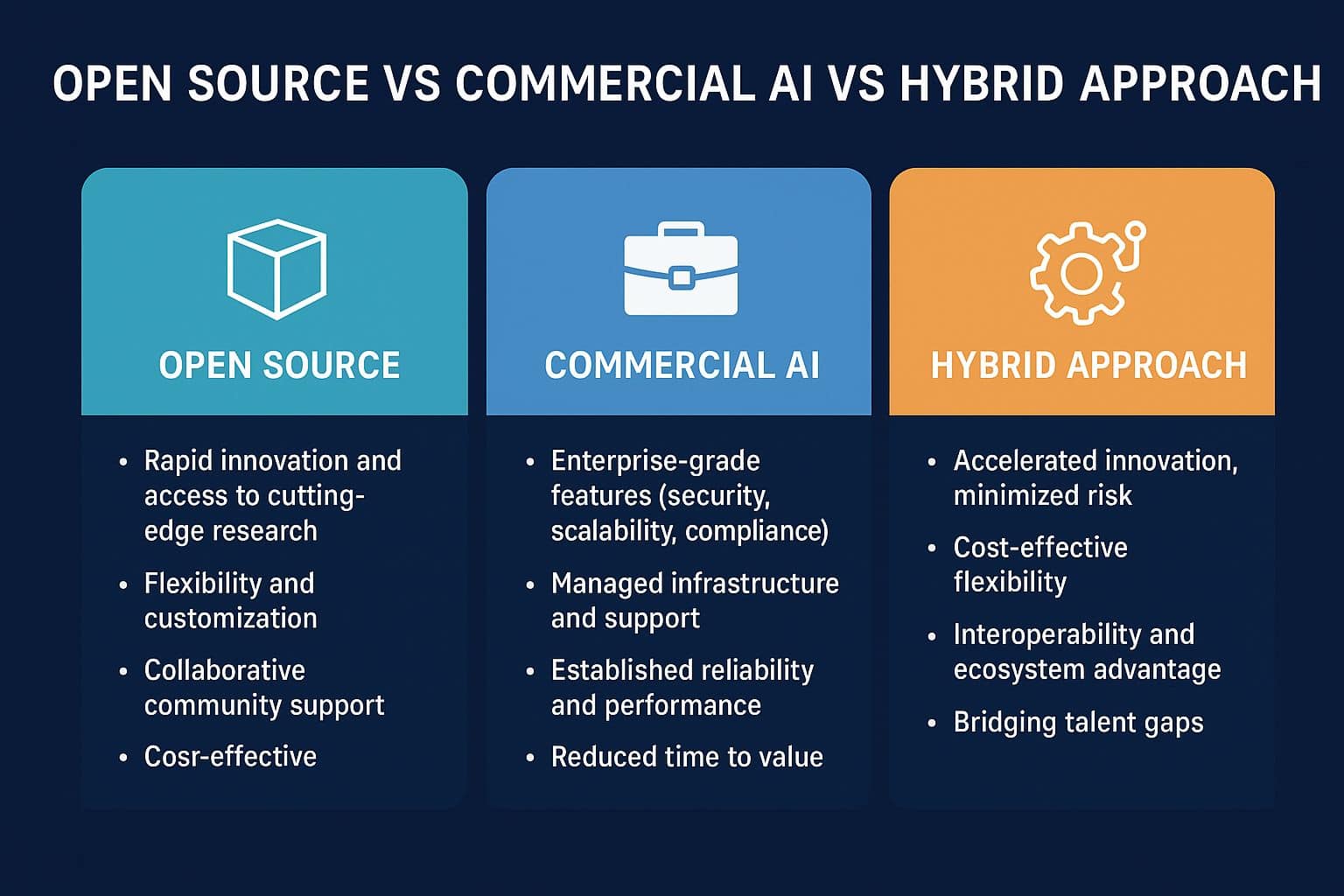Artificial intelligence is advancing at breakneck speed, fueled in large part by the power of open source frameworks. These tools have made AI development more accessible, collaborative, and innovative. At the same time, commercial AI platforms offer enterprise-grade capabilities such as security, scalability, compliance, and support.
For many organizations, the most effective path forward is not choosing one over the other, but adopting a hybrid approach that combines the flexibility of open source with the reliability of commercial solutions.
The Best of Both Worlds
Open source frameworks offer rapid innovation and access to cutting-edge research, enabling teams to experiment, customize, and build AI models quickly. However, commercial platforms deliver enterprise-ready features like managed infrastructure, compliance certifications, and ongoing support. Together, they allow organizations to innovate without sacrificing stability.
Accelerated Innovation, Minimized Risk
Open source moves fast—but not always with enterprise risk in mind. Commercial platforms provide guardrails such as governance, monitoring, and automated patching, helping businesses mitigate risks around data security, regulatory compliance, and operational reliability. A hybrid model ensures that innovation stays aligned with business and security needs.
Cost-Effective Flexibility
While open source software is free to use, scaling and maintaining AI systems can be resource-intensive. Commercial platforms streamline operations with ready-to-use APIs, automation, and cloud-native infrastructure, reducing the burden on in-house teams. The hybrid approach enables organizations to prototype with open source and scale with commercial tools, thereby optimizing costs at every stage.
Interoperability and Ecosystem Advantage
Commercial vendors increasingly support integration with popular open source frameworks, making it easier to adopt a plug-and-play approach. This interoperability allows businesses to leverage best-in-class tools—whether open or commercial—without being locked into a single vendor or technology stack.
Bridging the Talent Gap
AI talent is scarce and expensive. Open source frameworks often require deep expertise, while commercial platforms provide pre-built solutions and user-friendly interfaces that lower the barrier to adoption. A hybrid model allows organizations to maximize their existing talent pool while accelerating deployment.
Future-Proofing AI Investments
The AI landscape evolves rapidly, and what’s cutting-edge today may be obsolete tomorrow. By balancing open source’s agility with commercial platforms’ stability, organizations can remain adaptive while protecting long-term investments. This flexibility ensures they are not overcommitted to one approach as technologies mature.
Striking the Right Balance
The hybrid approach is not about compromise—it’s about strategic balance. Open source fuels creativity and agility; commercial platforms provide guardrails, scalability, and enterprise trust. By combining the two, organizations can innovate boldly while ensuring their AI initiatives are secure, sustainable, and business-ready.
Organizations that adopt a hybrid AI strategy will be best positioned to accelerate innovation, manage risk, and scale responsibly in an era where AI is rapidly reshaping every industry. Need help with your AI initiatives? ClearBridge can help!



Recent Comments